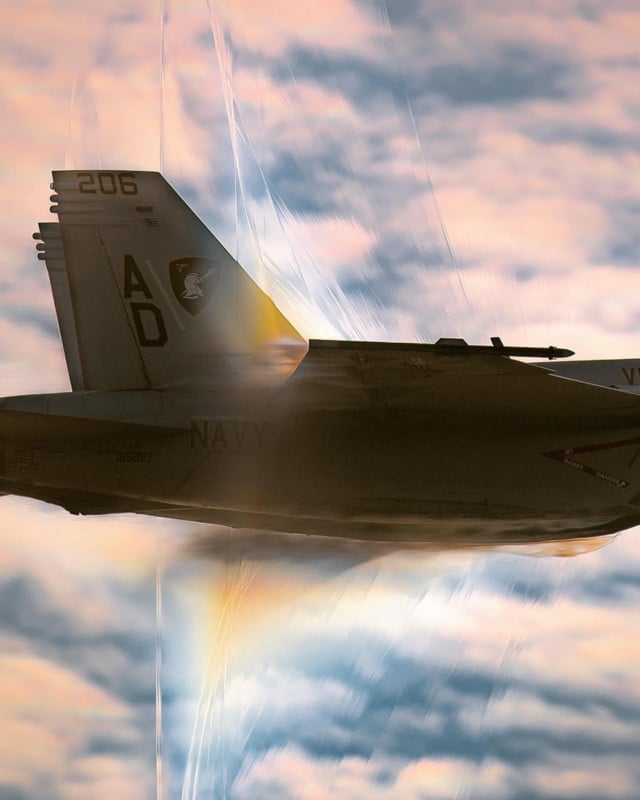Navy Fighter Jet Seen with ‘Shockwave Lines’ as It Nears Speed of Sound
![]()
Photographer Camden Thrasher was shooting a demonstration of US Navy fighter jets when he captured a remarkable close-up photo of a plane creating “shockwave lines” as it approached the speed of sound.
While his photo has gone viral online as an example of a jet breaking the sound barrier, Thrasher is quick to point out that the plane was not going faster than the speed of sound.
The annual airshow is held at Wittman Regional Airport in Oshkosh, Wisconsin, a city of nearly 70,000 in which residents would likely not be pleased to be disturbed by sonic booms every summer.
“There are various rules about supersonic flight and for the most part they exclude doing so at low altitudes or overpopulated areas,” the photographer tells PetaPixel. “That’s why, despite what people may think, the photo isn’t of a jet breaking the sound barrier.
“What typically happens at airshows is that the pilots will fly just below the speed of sound in a high-speed pass (for example Mach 0.97 instead of 1.00 or above). It’s still something like 700mph and is impressive to watch while still not breaking the sound barrier (or the rules).”
Warped Air and Bent Light
What is actually seen in the photo is how the air around a supersonic jet is warped as it nears Mach 1 (the speed of sound in a medium, or around 761 mph at sea level on a standard day).

“Those lines can start to form as a jet approaches the speed of sound,” Thrasher says. “I’m not an aerodynamicist, but I’ll try my best to explain.
“The airplane is going slightly less than the speed of sound but as the air passes over various parts of the wings and fuselage, the airflow itself can actually briefly be going supersonic in certain areas. As this happens, the air will be compressed or expanded and those changes in pressure will change how light is refracted or bent as it passes through.
“The visible effect is those ‘shockwave’ lines, or sometimes a cone-shaped cloud that envelops part of the aircraft if the air is humid enough.”
The viral photo was captured with a Nikon D5 DSLR at 500mm, f/5, 1/2500, and ISO 50.
Motorsport Photography with a Side of Aviation
Thrasher’s Instagram features a mix of impressive motorsport and aviation photography.
“I started photographing motorsports in high school as a hobby,” Thrasher says. “I went to college for vehicle engineering but decided to pursue photography full time afterward and I’ve been doing that for about 10 years now.
“I’ve always been interested in aviation but only fairly recently started photographing more of it in my free time. I use it as a break from the motorsports world but also to keep my brain active and thinking about new ways to photograph things.”
You can find more of Thrasher’s work on his website and Instagram.